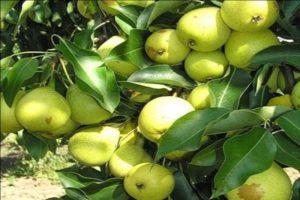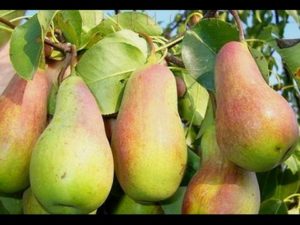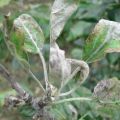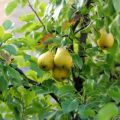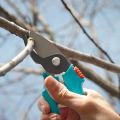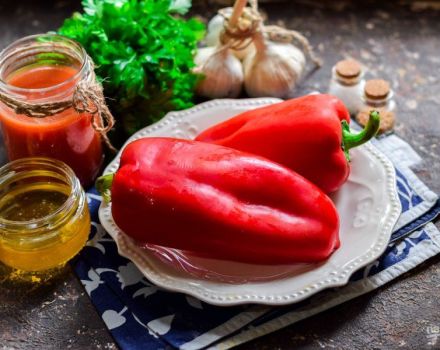Description and characteristics of the Prosto Maria pear variety, cultivation and pollinators
The pear, known as Just Maria, appeared in the gardens of summer residents relatively recently. This is a frost-hardy species, which, despite the fierce winters, recovers well and gives an excellent harvest. It's just that Mary does not require any special attention to herself. Like all types of pears, she likes a lot of sunlight, regular fertilization and moderate watering.
Content
- 1 Description and history of pear breeding Prosto Maria
- 2 Variety characteristics
- 3 Pros and cons
- 4 How to propagate a pear?
- 5 Features of growing a tree
- 6 How to properly plant a seedling?
- 7 Care of the variety Just Maria
- 8 Possible diseases and their treatment
- 9 Pests and the fight against them
- 10 Harvesting and storage
Description and history of pear breeding Prosto Maria
At the very end of autumn, in the gardens of experienced gardeners and simply amateurs, a recently bred variety ripens. It's just that Maria appeared thanks to Belarusian breeders, in 1990, by crossing the winter-hardy Belarusian late and disease-resistant Butter Ro. First, the new variety was given a name - Maria.
Later, the fruit gained popularity among gardeners and became known as Just Maria. This variety tolerates winters well and gives a good harvest. It's just that Maria can endure frosts up to 37 degrees, and in spring she quickly revives and bears fruit perfectly.
Variety characteristics
It's just that Maria is a relatively late variety, her fruits ripen only in October. The fruits are large, pear-shaped. The weight of one fruit is 180-200 grams. The peel of the pear is smooth and shiny. Green dots are visible on the surface.
The color of the fruit is green at first. As it ripens, the fruit turns yellow and takes on a rosy blush. The fruit tastes sweet and juicy, slightly sour. The pulp is a pleasant creamy color, not very dense, but oily. This is a dessert variety.
The tree grows quickly, but only grows up to 3 meters. The crown of an adult plant takes the form of a wide pyramid. The branches grow strongly upward and in width, but under the weight of the fruit they tilt slightly towards the ground. 40 kilograms of fruit are harvested from one adult plant.
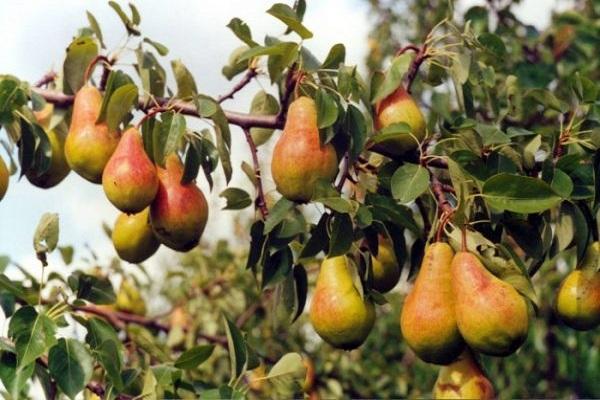
Pros and cons
Pros:
- excellent frost resistance;
- disease resistance;
- regular fruiting;
- excellent taste characteristics of fruits;
- presentation of ripe fruits;
- fruiting in the third or fourth year after planting.
Minuses:
- relatively low yield indicators;
- susceptibility to attacks by pests;
- crushing fruits at high yields.

How to propagate a pear?
It's just that Mary reproduces in such ways:
- Cuttings.
A branch with leaves is cut from an adult tree and lowered into a container of water. After a few weeks, the stalk gives roots. For better root formation, a Heteroauxin tablet is placed in the water.Then the cutting is planted in the ground and watered abundantly. It is advisable to carry out this procedure in the summer. Pre-cuttings can be planted in the greenhouse. For better rooting, the plant is watered up to 4-5 times a day.
- Layers.
The branch of an adult tree is bent down and covered with earth. The soil is well irrigated with water, the soil can be loosened beforehand. The top of the branch with leaves remains above the ground. At the point of contact of the shoot with the soil, roots are formed. When the branch is well rooted, it is cut from the parent tree. The time of the procedure is the season of intensive growth (from mid-spring to late summer). The branches for layering should be young and not yet lignified.

- Vaccination.
A stalk with dormant buds is cut from the mother tree. A sharp cut is made at one end, a blunt cut at the other. A thin branch with two or three unblown buds in early spring, at the moment the sap begins to move, is grafted under the bark of a tree, for example, a different kind of pear. You can insert the stalk into a stock cut in half. The branches of a tree, into which cuttings from another tree are inserted, are cut to hemp. Then Just Mary is implanted into them. The connection is tightly wrapped with tape.
Features of growing a tree
It's just that Maria, like all pears, loves a lot of sunlight, does not tolerate winds and too swampy soil. The tree is planted in the south side of the garden, on a hill, preferably on a fenced area.
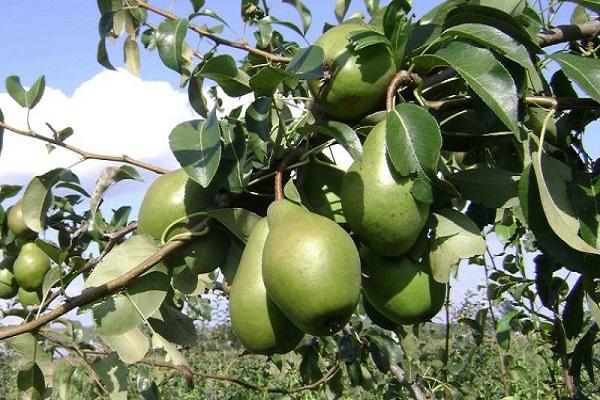
Landing dates
It's just that Mary is planted in early spring, before the leaves bloom, or in late autumn, before the onset of frost. Spring planting is preferred. The tree will be able to adapt well to the new environment in warm conditions.
Lighting and soil requirements
Just Maria loves black soil, well-fertilized soil and does not tolerate acidic soil. To equalize the acid-base balance, dolomite flour or slaked lime is added to the ground. A pear can grow on sandy and clay soil if organic and mineral fertilizing is added to it. The pear does not tolerate too wet soil; in swampy soil, its roots can rot.
It is undesirable to plant a tree in the shade of other trees. The pear develops poorly in conditions of insufficient lighting and gives small and sour fruits. Mary just loves sunlight.
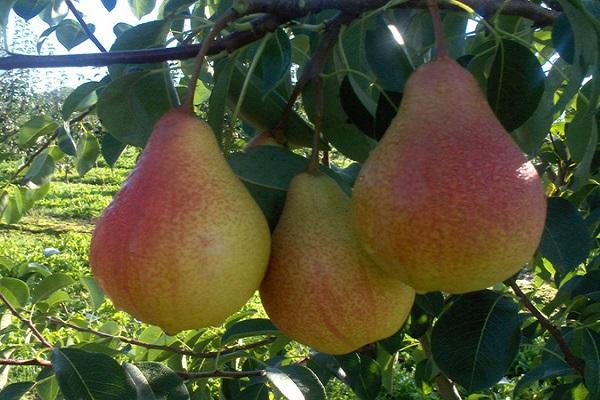
Selection of seedlings
It is advisable to buy planting material in nurseries. The seedlings should look firm and healthy. The age of the tree for planting is 1 or 2 years. It is undesirable to buy older plants - they take a long time and take root. The planting tree should be no more than 1.5 meters high.
How to properly plant a seedling?
Before planting, the roots of the seedling are placed in water for 12 hours, to which Heteroauxin is added to stimulate the growth of the root system. The tree is planted in a hole, the depth of which is about 1 meter. The excavated soil is mixed with mullein and mineral fertilizers (superphosphate, potassium nitrate).
Small stones for drainage and a little fertilized earth are poured onto the bottom of the pit, then a tree is inserted and sprinkled with soil up to the root collar. After planting, 2 buckets of settled water are poured under the root. You can drive a stake near a young tree, which will serve as a support for it.
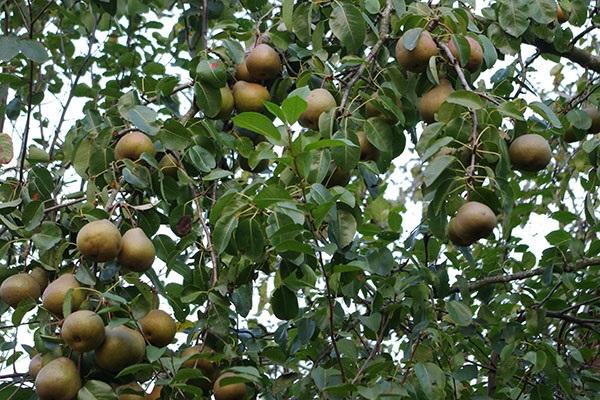
Pollinators
It's just that Mary can self-pollinate, though partially. For better yields, it is recommended to plant other varieties of pears near the tree, which will provide it with cross-pollination. For example, a variety in Memory of Yakovlev or Duchess.
Care of the variety Just Maria
It is recommended to take care of the tree, water it in dry season, and cut dry and diseased branches annually. If the yield is weak, the soil near the plant is fertilized with organic matter or minerals.
Watering
In the dry summer season, the tree must be watered. 2 or 3 buckets of water are poured under the root. The procedure is carried out 3 times a week.Young trees immediately after planting in the first month are irrigated regularly - every other day, one bucket of water is poured under the root. It is also recommended to moisten the ground near the pear in a dry spring, at the time of flowering and the formation of ovaries. Immediately after watering, the soil around the tree is loosened. Waterlogging of the soil must not be allowed. In conditions of excess moisture, the roots will begin to rot.
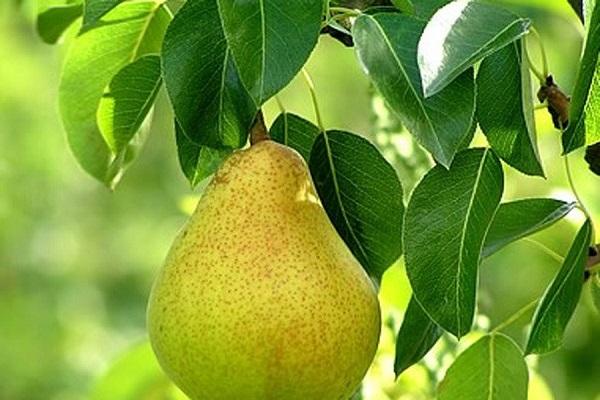
Mulching
The soil around the tree can be sprinkled with mulch. It inhibits the evaporation of moisture and inhibits the growth of weeds. Mowed grass, straw, small bark or sawdust are used as mulch.
Shelter
It's just that Maria tolerates winter well, but it is advisable to insulate young trees so that they do not die in severe frosts. Before the shelter, they clear the place near the tree from fallen leaves and weeds. It is advisable to whitewash the trunk with a solution that will protect the pear from rodents.
The tree is furnished with dry reeds or straw and tied with burlap on top. You can buy a special cover for the winter shelter of garden trees. The ground near the tree is sprinkled with a high (up to 30 centimeters) layer of mulch.

Pruning
Crown formation is carried out in early spring or late autumn. Spring pruning is done before the leaves bloom. Autumn - after all the foliage has fallen from the tree. The crown is thinned out, diseased and dry branches are cut off, several main branches are left on the pear. The upper branches are removed - they do not bear fruit. Lateral shoots are shortened by a third. The crown is formed in the second or third year after planting a young plant in open ground.
Fertilizer
It's just that Maria needs feeding for the third season after planting. In one year, the tree should grow by 30-50 centimeters. If the growth rate is low, the pear needs additional feeding. In the spring, before budding, a bucket of mullein or bird droppings dissolved in water can be poured under the pear. A month later, during the blooming of the leaves, the soil is fertilized with nitrogen fertilizers (Urea).
An adult tree needs feeding at the time of flowering and the formation of ovaries. It is recommended to fertilize the pear with the following preparations: Nitrofoska, Azofoska, Diammofoska, Bona Forte, Master, Agricola. At the time of fruit ripening, the pear is fertilized with superphosphate and potassium nitrate.
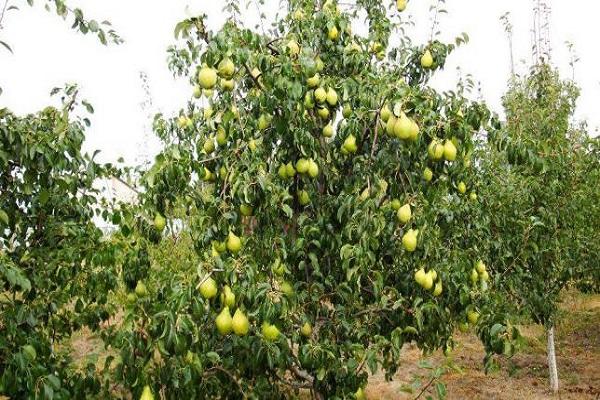
For the winter, Just Maria can be sprinkled with dry wood ash (add 200 grams to the loosened soil). This natural fertilizer contains a lot of potassium and phosphorus.
Possible diseases and their treatment
Just Maria has excellent immunity to many diseases. However, during rainy and cool summer seasons, the plant can get sick. For the prevention of diseases, the pear is sprayed with chemicals and fungicides.
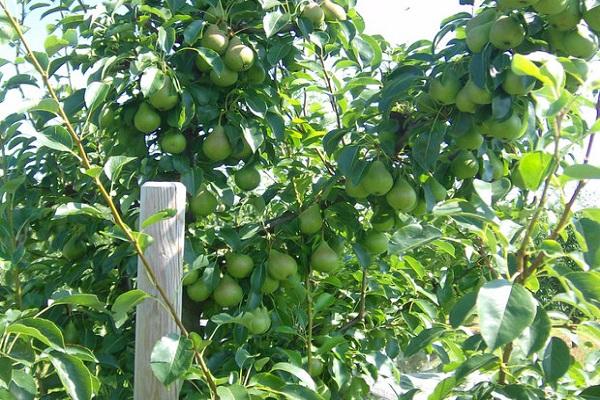
Diseases and treatments:
- Scab.
Fungal disease that affects foliage and fruits. First, brown spots appear on the leaves, then on the fruits themselves. The fruits crack and become hard. Diseased fruits are removed from the tree. The pear itself is sprayed with a Bordeaux mixture or fungicides.
- Moniliosis.
The fungus attacks the fruit with rot, after which they become completely unusable. Diseased fruits are removed from the tree. The pear is sprayed with Bordeaux liquid, Copper sulfate or fungicides (Fitosporin, Strobi).
- Sooty fungus.
Appears after aphid attack. The secretions of this insect are a breeding ground for microorganisms. A black bloom appears on fruits and leaves, resembling soot. Sick fruits are removed from the tree. The pear itself is sprayed with fungicides.
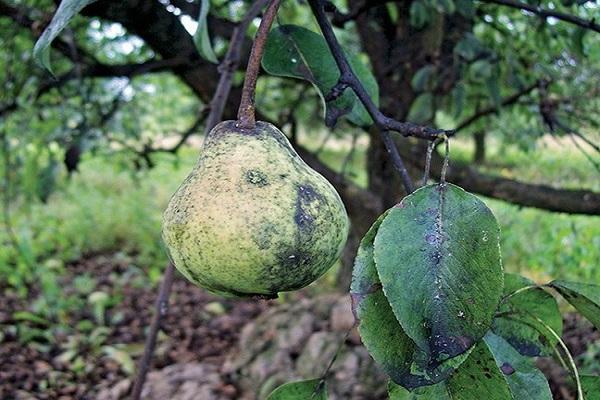
During the ripening of fruits, for the prevention and control of fungi, it is recommended to irrigate the tree with solutions prepared with the addition of soda, colloidal sulfur. Pear can be sprayed with infusion of garlic, onion. You can add a couple of potassium permanganate crystals to the water for irrigation. It is advisable to sprinkle the base of the tree with a handful of ash or lime.
Pests and the fight against them
Just Mary has a lot of pests.Insects (aphids, pear flower beetle, mites, pear moth) damage leaves, flowers and fruits themselves. Pests do not tolerate too strong odors. It is recommended to plant wormwood, marigolds, lavender, sage near the tree.
During the period of maximum activity of insects, sticky tapes are hung on the branches. It is recommended to spray the tree with preparations that repel insects (Lepidocid, Bitoxibacillin). To combat insects, insecticides are used (Aktellik, Aktara, Konfidor-Maxi). Ticks are destroyed with acaricides (Neoron, Apollo).
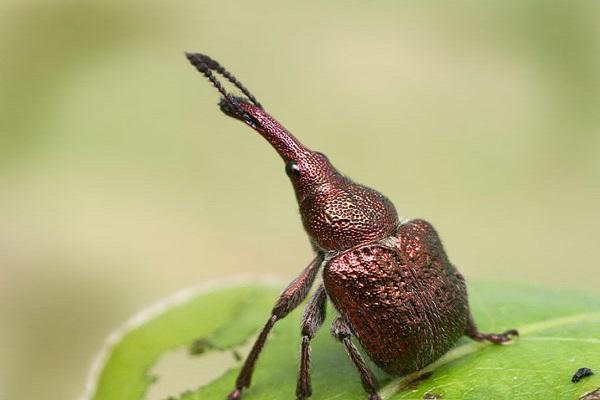
Harvesting and storage
Just Maria ripens in late autumn. Pears are picked from the tree unripe when they are firm and have a yellow-green surface. The harvest period is all October and early November. The fruit is kept cool. Storage temperature - from 0 to 2 degrees Celsius. In such conditions, the fruits may lie and not lose their presentation and taste until the New Year.
